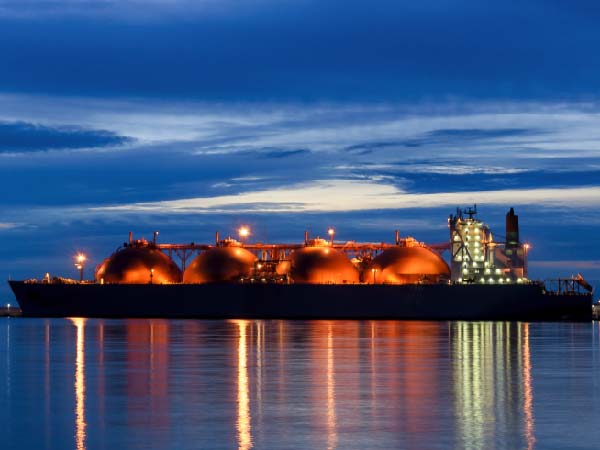Many people working with energy commodities will either use an ETRM or be aware of this type of software. However, they may be less familiar with the newer software category of Commodity Management.
As ETRMs evolved over time and incorporated new features and functionality in response to their clients’ needs to support the entire physical supply chain, a new category of Commodity Management software developed. Commodity Management incorporates the functions of an ETRM, but does far more as well, and is beginning to leave legacy ETRM systems far behind in terms of both functionality and benefits for clients.
What is ETRM?
ETRM stands for Energy Trading and Risk Management, and is a type of software that supports the business processes needed to trade energy commodities. ETRM software helps companies manage volatile commodity prices across physical and financial contracts, including supporting deal capture and price management, risk reporting, valuation and regulatory reporting.
ETRM systems were originally designed to manage a somewhat limited range of financial risks, but have evolved over time to provide a wider variety of risk management and better data. The goal of a good modern ETRM is to become a source of data for better commercial decision-making.
ETRM and operational risk
However, despite the goal of ETRM systems to be a source of commercial decision-making and execution as well as risk monitoring, it has been difficult for most ETRM providers to keep up. Many organisations using legacy ETRM systems have therefore found themselves managing part of their processes using generic tools such as spreadsheets, and only updating the ETRM with what has occurred after the fact.
This leaves businesses open to a wide range of risks. Accidentally overwriting formulas, changing the wrong cell value or using multiple versions of the same spreadsheet have all resulted in material losses for organisations managing their trading workflows in this way. And even when the spreadsheet is used with no mistakes, there is still the time taken out of busy traders’ and operators’ days to update the ETRM as well as carrying out the actual work, with all the attendant operational risk of copying information between systems.
Assuming that there are no errors in the spreadsheet and the data has been copied across to the ETRM correctly, there are still other risks to the business caused by this model. As the ETRM is being updated after actions have been taken, the data in it never reflects the actual live situation in the business. This means that risk management and commercial decisions must be made on incomplete data or pushed back until a report is completed – whether at the end of the day, week or even month-end to get a reasonable view of the situation. With the market for energy commodities becoming increasingly volatile and fast-moving, organisations have been demanding better from their software.
From ETRM to Commodity Management
As mentioned above, many ETRM vendors have been improving their systems in response to the market’s need for better management of the energy commodity supply chain, and even developing the newer Commodity Management software category as a result. Whilst good ETRM systems allow you to manage market and financial risks better than their legacy counterparts, Commodity Management also mitigates many of the causes of operational risk.
What is Commodity Management software?
Commodity Management software is designed to handle a much broader range of commodity trading, procurement, and processing workflows than an ETRM. Commodity Management particularly builds on features to support physical trading so that every aspect of contracts, logistics management and commodities processing is managed within the Commodity Management system.
For example, operators are able to manage all their logistics, including allocating stock to contracts and shipments, managing multimodal transport and inspections all within the system. They can even manage conversions between packaging types, blending or splitting lots and converting between weights and volumes, all within the same system that instantly updates trading and risk teams as things change.
Traders and risk managers also benefit from Commodity Management as they too can carry out every aspect of their role within the system. Traders can capture deals, work out the best pricing strategies with automated pricing calculations, and create contracts all in one place without the need to copy information or update risk reports. And because risk managers are using the system live too, traders can check credit lines and pre-approvals in real time without slowing their processes down.
Risk managers also benefit from the shared live information as it allows them to adapt to situational changes throughout the day. A Commodity Management system gives risk managers the information they need for accurate hedging at all times so that they can ensure the business is both protected from risk and as profitable as possible.
Commodity Management software is not only an advantage for trading firms; it can also be a real advantage to power generators and their fuel procurement teams. The contract and logistics management features can usually create integrated data flows to an ERP, or even be added on to an existing ETRM. They make it easier and faster for teams to manage inbound fuel shipments and storage, control and record sustainability data including lifecycle carbon dioxide emissions, and, for areas such as biomass procurement, manage inspections, assays and burn rates for each shipment for more efficient boiler management processes.
The benefits of Commodity Management
By integrating logistics management, trading, risk and compliance, Commodity Management software provides benefits to each of these teams, and wider benefits across the organisation too. No matter your supply chain position, improvements in traceability, compliance, and business agility are just some of the results you can expect to achieve.
And because good Commodity Management systems are usually hosted in the Cloud, you also gain all the benefits of cloud technology. These benefits typically include greater flexibility and the ability to customise your solution so that it fits your own workflows, faster development and implementation, and better access to data, anywhere and on any device.
Ultimately, the purpose of Commodity Management is to generate the benefits that businesses have been lacking from traditional ETRM systems. Because all processes are carried out within the one system and data is shared across your organisation instantly, a Commodity Management system can provide the single source of data necessary to power effective decision-making across your business.
Discover Gen10’s Commodity Management software built for the energy industry today.



